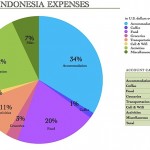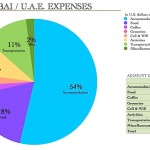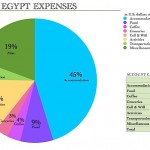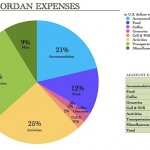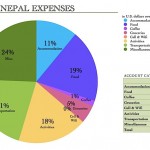Check out this post — Expense Report: Pre-Trip Costs — for a better understanding of other costs associated with a RTW trip, as well as a definition of my travel style and how it impacts my budget.
Here’s what I spent in U.S. dollars over 16 nights in Malaysia:
- Accommodation = $458.51 … $28.65 per night
- Food = $206.50 … $12.90 per day
- Groceries = none
- Coffee = $27.90 … $1.74 per day
- Activities = $658.48 … $41.15 per day
- Cell & Wifi = $39.87 … $2.49 per day
- Transportation = $349.33 … $21.83 per day
- Miscellaneous = $132.95 … $8.30 per day
And the grand total for 16 nights in Malaysia is…:
$1,873.56 USD, which works out to $117.09 per day.
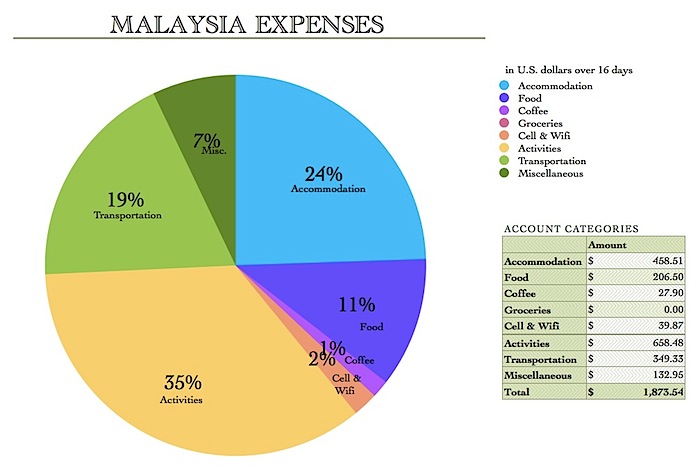
Here’s how that number compares with other countries I’ve traveled to:
- My daily average in Cook Islands: $157.05
- My daily average in New Zealand: $88.56
- My daily average in Australia: $83.37
- My daily average in Singapore: $78.86
- My daily average in Indonesia: $51.34
- My daily average in Malaysia: $117.09
Yikes. That number is REALLY high because of my scuba diving adventures in Borneo (this is why the Activities slice of the pie chart is so large). But it was worth it to swim with giant schools of fish on Sipadan Island:
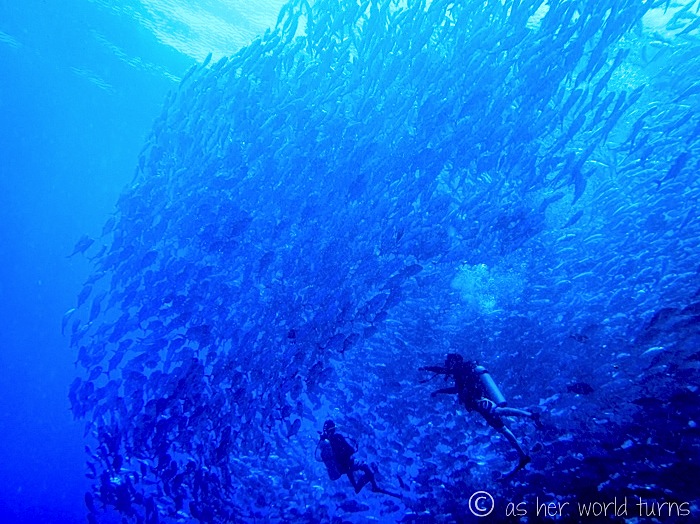
You may also recall that I majorly splurged by spending one glorious night on pricy Mataking Island. If I take that night out of the equation (subtract $450 USD and then divide by 15 nights instead of 16), then my cost-per-day goes down from $117 to $95. So just by splurging on a single night — which included four dives on Mataking — shot my average daily expenses up by over $20/day.
Similarly, if you take ALL diving activities out of the equation, my best guess is that it costs about $60 per day to visit Malaysian Borneo. When you consider that a NICE dorm bed is about $10 per night, $60 per day still sounds high — and there are two key reasons for this. First, round-trip domestic airfare to/from Borneo cost me $200 USD (cheaper if you book farther in advance than I did), so once you factor in domestic airfare the cost-per-day to travel to Borneo goes up. But if you stay on Peninsular Malaysia instead of going to Borneo, you’d avoid the airfare and bring down the cost-per-day to around $45. Second, the parts of Borneo that attract tourists (like the jungle area near Sandakan and the Kinabatangan River) are considered malaria risk zones and it can be expensive to buy anti-malaria drugs. More on that below. In summary: transportation and anti-malarials are the two reasons that Malaysian Borneo is more expensive to visit that Peninsular Malaysia.
A few notes…
- I used xe.com in mid-September to calculate the exchange rate and at that point in time, 1 MYR (Malaysian Ringgit) = .3067 USD.
- I received one blog discount while traveling through Malaysia: free entrance to Rasa Ria’s Orangutan feeding (about $20 USD).
- I did not include my flights into or out of Malaysia, since I will note international flights on a separate RTW airfare budget at the end of my trip. Domestic flights to/from Borneo are included under Transportation.
- For around $40 USD total over 2+ weeks of travel, I purchased a SIM card with calling, texting, and data from Celcom. Prepaid cards for adding more data or minutes are available on most street corners. This number is a little high because my grandpa’s birthday fell over this trip, so that includes a call to the States (I ran out of international minutes mid-call and dashed out to buy more from the shop downstairs). I continue to use the Viber app to communicate for free with my friends and family back home, although they must also have the Viber app for this to work.
- I continue to use my Charles Schwab debit card to avoid international ATM fees.
- I still have not purchased any souvenirs on this RTW trip.
- Some of the miscellaneous items I bought include: two new dry-fit T-shirts ($21 each), anti-malaria meds ($67 USD)*
* A NOTE ON MALARIA: While you can get cheap malaria prevention meds like Doxycycline, that’s not ideal because you have to take it for 28 consecutive days (!) after leaving a malaria risk zone; if you miss a single day you could still get malaria, according to my doctor in Los Angeles. There are also side effects like increased sensitivity to sun (Borneo is right near the equator so that’s not to be taken lightly) and the possibility of yeast infections (ewww). So while Doxycycline is a cheap way to prevent malaria, many travelers instead choose to pay a lot more for the drug Malarone, which you only have to take for 7 days after leaving a malaria risk zone and there are less side effects. Since I previously took Malarone in Peru and Thailand, I was confident that my body would react fine to it. I paid 218 MYR (or $67 USD) for 12 pills in Sandakan, since there was a supply shortage in the U.S. when I departed last March (my travel doctor suggested I just find Malarone upon arrival in Malaysia; I got it at a local pharmacy the day I flew into Kota Kinabalu). There is at least one other popular anti-malaria drug called Mefloquine but some people report having anxiety, hallucinations, and disturbing dreams while taking it. IMPORTANT DISCLAIMER: I am (clearly) not a medical expert and am NOT offering definitive advice on the subject of anti-malarials. I’m sharing this information from a BUDGET perspective since the cost of Malarone is rather significant — $67 USD to cover my 4 days in Sandakan [12 daily pills = start taking them 1-2 days before arrival, 4 days while in malaria risk zone, and then 7 days after departure]. Even while on malaria meds it’s still important to wear long pants/sleeves after sunset and use bug spray liberally. SIDE NOTE: Dengue fever is another concern in both Indonesia and Malaysia — unlike malaria, there is NO preventative medication; the only way to avoid it is to constantly use bug spray and wear long pants/sleeves. Mosquitoes carrying Dengue fever tend to bite in the daytime while mosquitos carrying malaria are more likely to bite at night, or so I’ve read. There is also no treatment once you’ve caught Dengue fever — doctors can only treat the symptoms (fever, intense muscle pain) until the disease works its way out of your system in about 1-2 weeks. If you contract malaria, the treatment is actually just higher doses of anti-malarial drugs like Malarone.
I hope this has been helpful to anyone curious about the finances involved in visiting this country.

